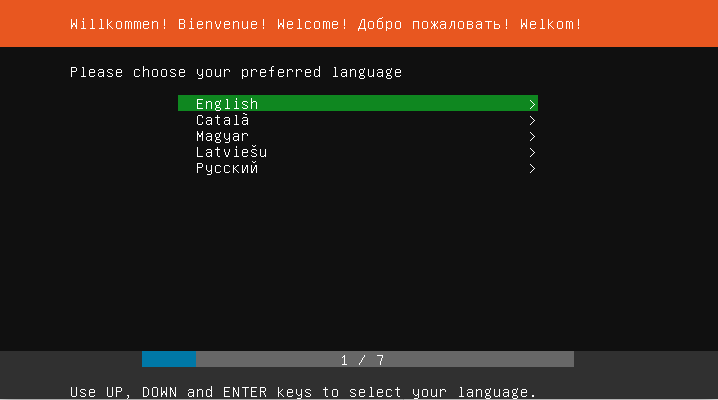Ubuntu 18.04 LTS: what's new?

Yesterday, April 26, 2018, the release of the next version of Ubuntu - 18.04 Bionic Beaver, took place. Its code name can be translated into Russian as “a very strong beaver” (yes, the word bionic has such a meaning ). Canonical founder Mark Shuttleworth explains the choice of name as follows:
Thus, we welcome creators - those who create applications and packages, who create Ubuntu, who create something based on Ubuntu. Paying tribute to their tireless work, we chose the beast as a mascot, known for its energetic attitude, hardworking nature and engineering savvy.
Ubuntu 18.04 belongs to LTS (Long Term Support) versions. They are released every two years (the previous LTS version was April 16) and are supported for five years from the date of release.
Today, on the day of the official release, it's time to talk about the innovations implemented in the new version of Ubuntu. And our users today can try everything in practice: the image of Ubuntu 18.04 is already available for use in all our services: in the Virtual Private Cloud , Vscale Cloud Servers , and in dedicated servers .
Kernel 4.15
Ubuntu 18.04 is based on the core of the latest version (4.15), which was released on January 18, 2018. In this version, several important innovations were implemented, which we will discuss below.
The 4.15 kernel implements Specter and Meltdown vulnerability protection.
For x86_64 architecture processors, the Page Table Isolation mechanism (Specter protection) is enabled by default . Meltdown protection is provided by retpoline support (see also interesting explanations here ).
Unfortunately, these protective mechanisms greatly reduce performance. That is why the 4.15 kernel provides the ability to disable them: just specify the boot parameters:
pti=off и spectre_v2=off.
The directory / sys / devices / system / cpu / vulnerabilities has been added to sysfs, which contains information about system-wide vulnerabilities and protective measures taken.
The creation of a single cgroup hierarchy has been finally completed in the new kernel (we wrote about this in one of our previous articles ): a CPU resource controller mechanism has appeared , with which you can control the consumption of processor resources for task groups.
Another innovation concerns the Live Patching mechanism, with which you can apply patches on the fly, without rebooting the system (we also raised this topic in previous publications ): support for the so-called shadow variables was added to it(shadow variables), with which you can add additional data to the kernel structure after applying the patches.
A number of interesting innovations are associated with the BPF mechanism. The bpftool utility is now officially added to the system. Introduced BPF-based device controller using cgroup v2 mechanism.
All this is far from all the innovations that appeared in the new version of Ubuntu. More detailed reviews can be found here (in English) and here (in Russian).
Easy to use with PPA
In previous versions, using PPA repositories was not a very complicated procedure, but still tedious. To install the necessary packages from PPA, it was necessary to execute three commands: add a repository, update the list of packages, and only then proceed with the installation.
Ubuntu 18.04 made everything simpler: immediately after adding the repository, the apt-get update command is executed automatically.
User data collection
Sometimes the new is the well-forgotten old. There have already been attempts to collect user data in Ubuntu and, quite understandably, they have become the subject of sharp criticism. However, in version 18.04, data collection is enabled by default (you can always disable it if necessary). The system will collect the following data:
- Ubuntu version and build
- information about the presence of a network connection at the time of installation;
- hardware information (CPU, RAM, GPU, etc.);
- information about equipment manufacturers;
- geographic location of the user;
- installation time;
- information about downloading third-party codecs and downloading updates during installation;
- disk layout;
- Information about system crashes.
In addition, the Ubuntu Popcon service (Ubuntu Popularity Contest) collects application installation statistics, thus identifying the most popular ones.
Canonical promises to publish all the collected data in the public domain for further analysis.
New installer
Starting with version 18.04, Ubuntu will use a new system installer - subiquity . You can read more about it here .

How to upgrade
Upgrading to Ubuntu 18.04 from previous versions is simple as simple as running the following commands:
$ sudo apt update && sudo apt upgrade
$ sudo do-release-upgrade -d
Conclusion
In this article, we examined the main innovations implemented in Ubuntu 18.04. If it seems to you that we have missed any important innovations, write about it, and we will definitely supplement our review.
We invite everyone to share their impressions of the new version of Ubuntu in the comments.
